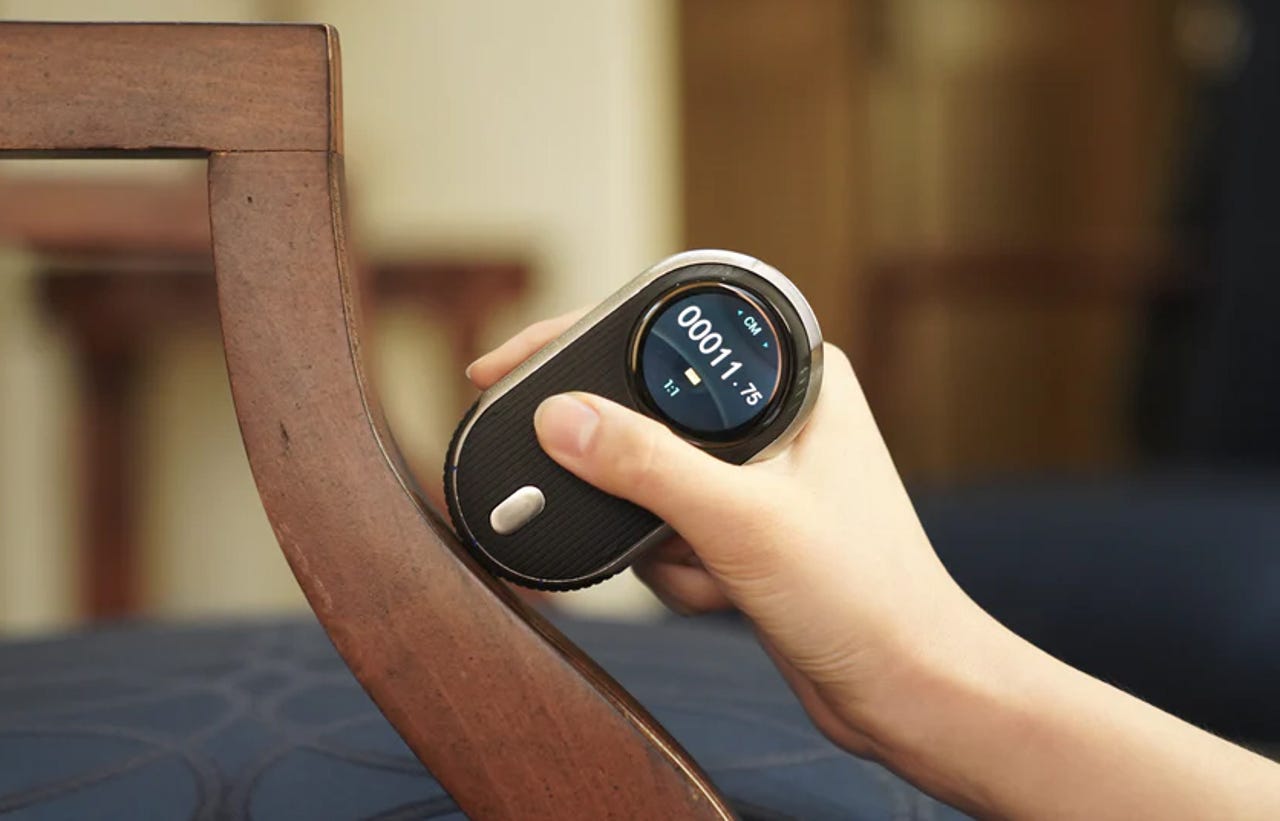'ZDNET Recommends': What exactly does it mean?
ZDNET's recommendations are based on many hours of testing, research, and comparison shopping. We gather data from the best available sources, including vendor and retailer listings as well as other relevant and independent reviews sites. And we pore over customer reviews to find out what matters to real people who already own and use the products and services we’re assessing.
When you click through from our site to a retailer and buy a product or service, we may earn affiliate commissions. This helps support our work, but does not affect what we cover or how, and it does not affect the price you pay. Neither ZDNET nor the author are compensated for these independent reviews. Indeed, we follow strict guidelines that ensure our editorial content is never influenced by advertisers.
ZDNET's editorial team writes on behalf of you, our reader. Our goal is to deliver the most accurate information and the most knowledgeable advice possible in order to help you make smarter buying decisions on tech gear and a wide array of products and services. Our editors thoroughly review and fact-check every article to ensure that our content meets the highest standards. If we have made an error or published misleading information, we will correct or clarify the article. If you see inaccuracies in our content, please report the mistake via this form.
This laser measurer is a great idea, but its flaws frustrate


If you want to create a floorplan, or just work out the length of a piece of wood you need for a new shelf, a laser measuring tool should be a lot handier than a tape measure. The measurement should be more accurate, and it can even check if you've put the shelf up straight because it doubles as a spirit level.
The $229 Meazor from Hozo Design promises to be even smarter than a laser measurer, with additional features like a rolling measure built into one end, a tripod hole on the back and a built-in stand, plus the ability to calculate floorplans, work out angles and area measurements and sync measurements to an app on your phone.
In practice, we found it frustrating to use.
ZDNET Recommends
Before you start you need to charge up the device, install the app (Android or iOS) on your phone and connect the Meazor over Bluetooth. Plugging it in to charge is as unergonomic as the Apple mouse, with the cable sticking out of the back, and the app shows similarly unoptimized design: the promised tutorial went to a 404 page for us, and the written instructions are confusingly poor.
Also: Smart home showdown: What Amazon's device strategy is really all about
You don't need the app to control the Meazor, just to record the measurements you take with it. However, you have to have your phone in your hand every time you want to send a measurement – which you do, rather unintuitively, by tapping the number on the little round touchscreen – and then accepting the sync.
Taking a measurement is also somewhat involved: you swipe in the middle of the touchscreen to pick what you want to do, then swipe at the bottom to change any settings. Some of these settings are very useful, like picking whether you want to measure from the front, back, middle or stand of the Meazor. Our favourite tool was the spirit level, which is extremely accurate and gives you a reading both side to side and front to back without needing to flip the device round.
The laser measurer is accurate and can cope with long distances, as long as it's not too bright: we measured up to 15 meters comfortably, but struggled to reach the promised 25m. You can chose imperial or metric measurements and then flip between millimetres, centimetres and metres or inches, feet and yards. Oddly though, the imperial measurements are decimals rather than the fractions commonly used on measuring tapes, so you get 9.32 feet rather than 9 feet 4 1/8". You also need to place the device where you can see and reach the screen to sync the measurement to your phone, because we couldn't find an obvious way to lock the measurement so you can pick it up and read it.
The rolling measure is pretty nifty; it lights up with three points so you can decide if you're measuring from the front edge, base or back edge and roll until that particular light is in the right place. If you're measuring a blueprint rather than a physical object, you can set the scale, and either way you're more likely to get a precise measurement than if you were reading off a ruler or tape measure. Still, a good scanning package is probably a better way to digitise a paper floorplan.
The floor plan mode ought to be really useful: it builds a floor plan after you point the laser at each corner in the room in turn. You can tilt it to reach the corners if there's furniture in the way, and if you have to move it to reach all of them you can align the Meazor to its new location by rescanning a couple of the corners you've already measured – or so the manual claims. But when you try to do that, the device tells you those options are coming in an update and despite waiting some months we couldn't find an update.
You can scan two sides of a rectangle or triangle and get the area or the length of the third side: confusingly that's labelled Pro Scanner. There's also a protractor mode that uses the laser to take the measurement of the angle (and an optional attachment for greater accuracy).
The curve scanner was one of the most appealing features: we were looking forward to scanning options into virtual reality. Sadly, while you can scan a curved wall, you can't really use it for scanning objects: you have to move the Meazor rather than what you're measuring, and you only get a single profile line where the laser measures, not a full 3D profile. You also need a very steady hand: make sure the device is on a tripod for this and even then, the measurements aren't accurate enough to use for precision work.
We found even the basic floor plan mode challenging, too. When we imported the plan to the phone app, it was placed at an angle on the grid – and when we tried to import a rolling measure for the size of a door we placed on the floorplan, it kept telling us it was four-something inches rather than the 28 inches we'd just measured. We tried again and somehow ended up with four doors on the floorplan, so this is a function that will need practice. If you do get this to work, you can build a simple floorplan and export it as a PDF, JOG or DXF file – pick the latter and you can use it in a real CAD package.
Battery life was much shorter than promised; we saw a battery warning after a couple of hours of taking measurements, although the battery did actually last for quite a while after that – but not the full 16 hours. It charges over USB-C, so you can top it up during the day from a power bank.
Having to send data points one by one means juggling the two devices whatever you're measuring: it may not be convenient to pull your phone out over and over again on a building site. Putting it on a tripod is key, because while it's not flimsy, the Meazor isn't substantial enough to hold steady.
This ought to be a really useful device; in the end we found it frustrating. Still, the promise of smart devices is that the software can be updated to improve them, and it wouldn't be hard to make the user interface and functionality much easier to use. Until then, we'll be using it as a nice but overly expensive spirit level.